“Poetry is a mystic, sensuous mathematics of fire, smoke-stack, waffles, pansies, people, and purple sunsets. The capture of a picture, a song, a flair, in a deliberate prism of words.” ~ Carl Sandburg
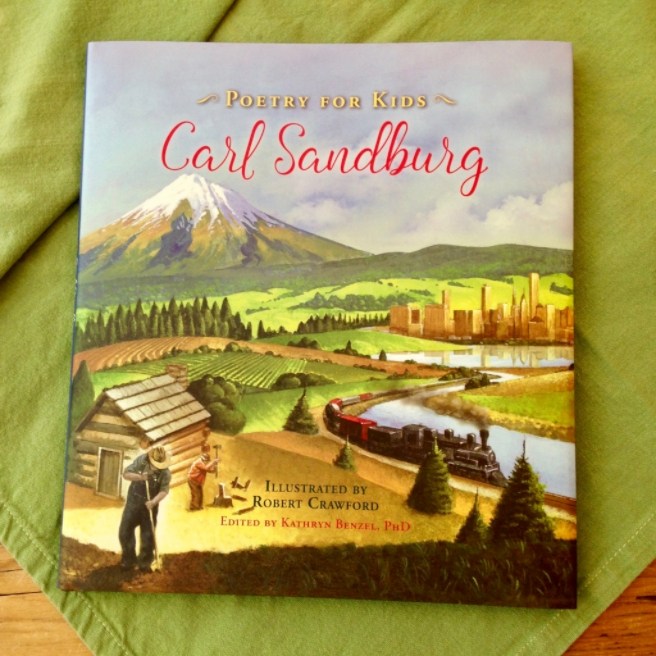
Carl Sandburg has been called the “Voice of America” and the “Poet of the People,” and in this new poetry collection, young readers can easily see why.
Edited by professor and Sandburg scholar Kathryn Benzel and illustrated by award winning artist Robert Crawford, Carl Sandburg (MoonDancePress, 2017), is the third title in the marvelous Poetry for Kids series.
It contains 36 of Sandburg’s finest poems presented in two sections, Poems about People and Poems About Places. Widely anthologized favorites such as “Fog,” “Young Bullfrogs,” “I Am the People, the Mob,” and “Theme in Yellow” are featured alongside new-to-me gems, “Early Moon,” “River Roads,” “Harvest Sunset,” and “Haunts.”
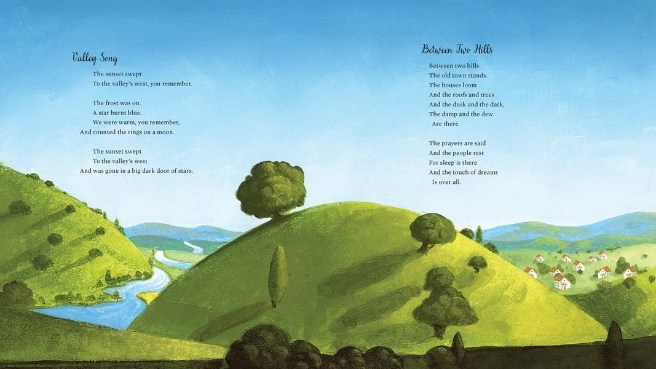
Just as he rode the rails across country, Sandburg’s verses transport us from farm to prairie to big city, expressing his wonder, pride, and reverence for the beauty and expansiveness of our great nation. As someone who lived the American dream, born of humble beginnings and having worked from a young age at many odd jobs (shoe shine boy, milk and newspaper delivery, porter, farm laborer, bricklayer, coal-heaver) before becoming a journalist, editor, poet, and Pulitzer Prize winning author, Sandburg became a champion of the American worker, translating his wealth of first-hand experiences and hard-won lessons into passionate free verse.
When he wrote, “I am the people — the mob — the crowd — the mass,” he tapped into early 20th century American life as no else had done before, using the colloquial speech of the common man.
Do you know that all the great work of the world is done through me?
I am the workingman, the inventor, the maker of the world’s food and clothes.
I am the audience that witnesses history. The Napoleons come from me and the Lincolns. They die. And then I send forth more Napoleons and Lincolns.
How interesting to meet a telephone operator who has a “thingamajig clamped on her ears,” a washerwoman who “sings that Jesus will wash her sins away,” a milkman “who never argues,” a policeman who “buys shoes slow and careful,” and a group of muckers “stabbing the sides of the ditch/Where clay gleams yellow,/Driving the blades of their shovels/Deeper and deeper for the new gas mains.”

Sandburg’s whimsy and lyricism are showcased in “Branches” (“the rain, the wind, the swishing thing they sing in the morning now”), while he strikes a haunting tone in “Shenandoah” (“In the Shenandoah Valley, one rider gray and one rider blue, and the sun on the riders wondering”).
While I was disappointed that Sandburg’s iconic “Chicago” was not included (perhaps deemed too visceral for the target audience?), we do get big city glimpses from “Smoke and Steel” and the “The Skyscraper Loves the Night” (“One by one the lights of a skyscraper fling their checkering cross work on the velvet gown of night”).
Especially kid friendly are the poems about American hero Buffalo Bill, minor league baseball players battling it out in a 16-inning game, the limited express train carrying 1,000 passengers, and the extinction of the buffaloes.
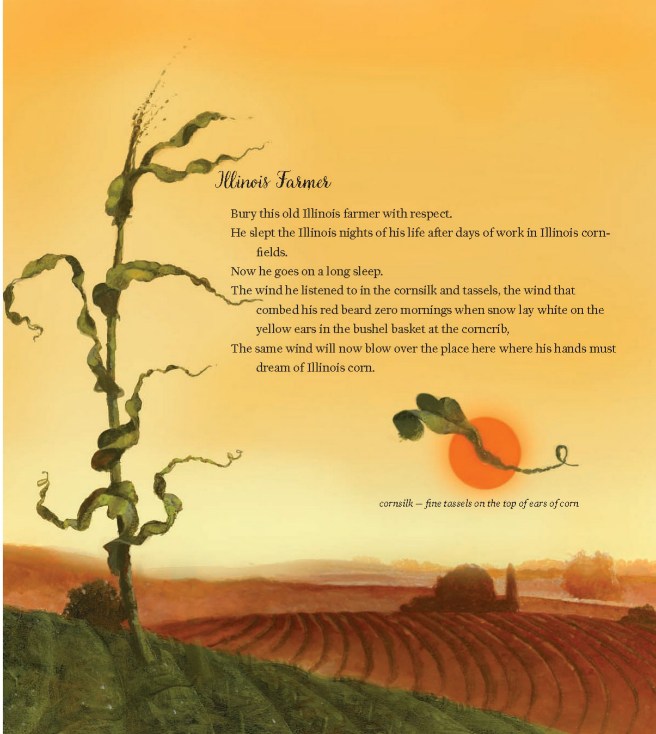
Crawford’s rich, evocative cityscapes and landscapes, as well as his marvelous depictions of ordinary people going about their lives, pair beautifully with Sandburg’s poems, providing elegant, engaging points of reference — pleasing snapshots of America past and present.
I especially like the boy listening intently to the bullfrogs, the man napping beneath a gorgeous pink crab-apple tree, the lush green hills with a town tucked in the valley below, the Native American man paddling a canoe on a glass-blue lake by moonlight.
A nice introduction to Sandburg’s work, this collection will give young readers a glimpse of America through the eyes and ears of a poet who wrote not only of the people, but open heartedly for them. Also included are a brief bio, helpful definitions of key words, as well as editor commentary about all the poems (“What Carl Was Thinking”).
Enjoy this sampler platter of poems. Of course we’re starting with SOUP! 🙂
*
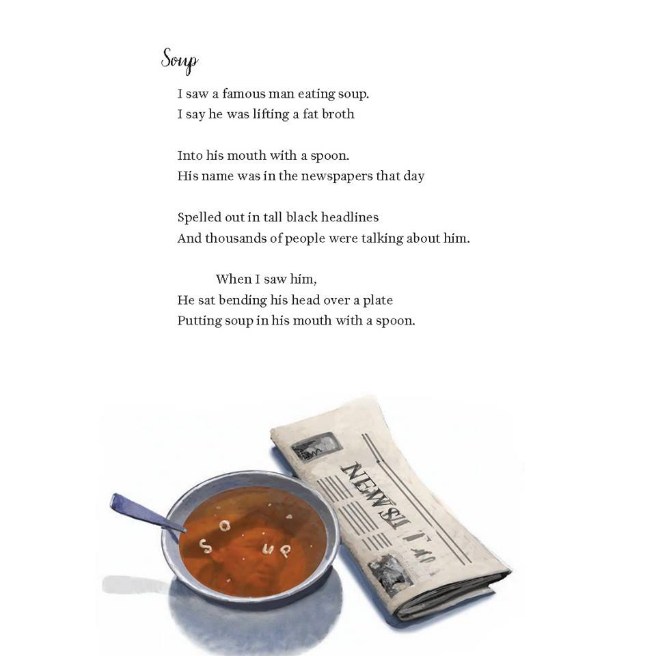
SOUP
I saw a famous man eating soup.
I say he was lifting a fat broth
Into his mouth with a spoon.
His name was in the newspapers that day
Spelled out in tall black headlines
And thousands of people were talking about him.
When I saw him,
He sat bending his head over a plate
Putting soup in his mouth with a spoon.
*

JAZZ FANTASIA
Drum on your drums, batter on your banjoes,
sob on the long cool winding saxophones.
Go to it, O jazzmen.
Sling your knuckles on the bottoms of the happy
tin pans, let your trombones ooze, and go husha-
husha-hush with the slippery sand-paper.
Moan like an autumn wind high in the lonesome treetops,
moan soft like you wanted somebody terrible, cry like a
racing car slipping away from a motorcyle cop, bang-bang!
you jazzmen, bang altogether drums, traps, banjoes, horns,
tin cans — make two people fight on the top of a stairway
and scratch each other’s eyes in a clinch tumbling down the stairs.
Can the rough stuff . . . now a Mississippi steamboat pushes
up the night river with a hoo-hoo-hoo-oo . . . and the green
lanterns calling to the high soft stars . . . a red moon rides
on the humps of the low river hills . . . go to it. O jazzmen.
*

LAUGHING CORN
There was a high majestic fooling
Day before yesterday in the yellow corn.
And day after tomorrow in the. yellow corn
There will be high majestic fooling.
The ears ripen in late summer
And come on with a conquering laughter,
Come on with a high and conquering laughter.
The long-tailed blackbirds are hoarse.
One of the smaller blackbirds chitters on a stalk
And a spot of red is on its shoulder
And I never heard its name in my life.
Some of the ears are bursting.
A white juice works inside.
Cornsilk creeps in the end and dangles in the wind.
Always — I never knew it any other way —
The wind and the corn talk things over together.
And the rain and the corn and the sun and the corn
Talk things over together.
Over the road is the farmhouse.
The siding is white and a green blind is slung loose.
It will not be fixed till the corn is husked.
The farmer and his wife talk things over together.
*

THEME IN YELLOW
I spot the hills
With yellow balls in autumn.
I light the prairie cornfields
Orange and tawny gold clusters
And I am called pumpkins.
On the last of October
When dusk is fallen
Children join hands
And circle round me
Singing ghost songs
And love to the harvest moon;
I am a jack-o’-lantern
With terrible teeth
And the children know
I am fooling.
*

STREET WINDOW
The pawn-shop man knows hunger,
And how far hunger has eaten the heart
Of one who comes with an old keepsake.
Here are wedding rings and baby bracelets,
Scarf pins and shoe buckles, jeweled garters,
Old-fashioned knives with inlaid handles,
Watches of old gold and silver,
Old coins worn with finger-marks.
They tell stories.
*
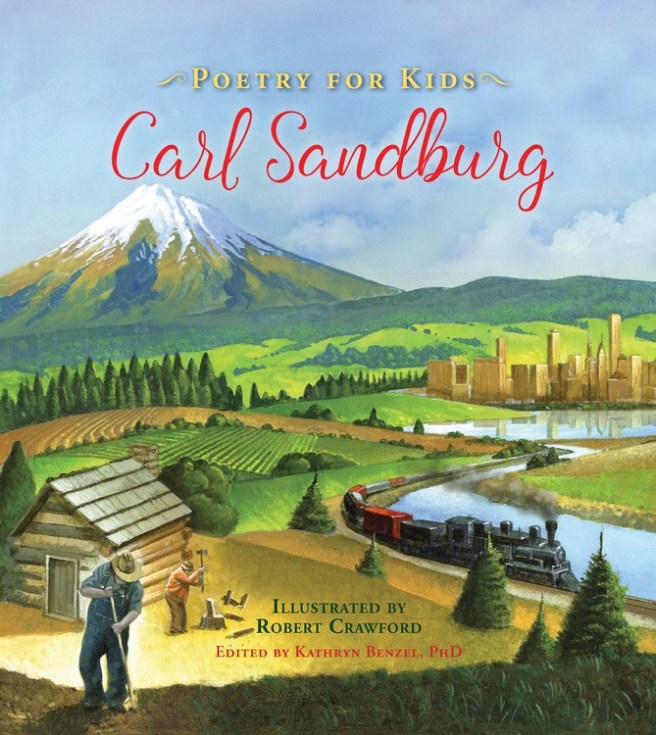
POETRY FOR KIDS: Carl Sandburg
Edited by Kathryn Benzel, Ph.D.
Illustrated by Robert Crawford
Published by MoonDance Press, April 2017
Poetry Picture Book for ages 9-12, 48 pp.
*Includes Introduction and “What Carl Was Thinking”
*
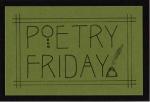 Buffy Silverman is hosting the Roundup at Buffy’s Blog. Sashay on over and check out the full menu of poetic goodness being served up in the blogosphere this week. Have a nice weekend. Happy June!
Buffy Silverman is hosting the Roundup at Buffy’s Blog. Sashay on over and check out the full menu of poetic goodness being served up in the blogosphere this week. Have a nice weekend. Happy June!
*Interior spreads posted by permission of the publisher, original text copyright © 2017 Kathryn Benzel, illustrations © 2017 Robert Crawford, published by MoonDance Press. All rights reserved.
Copyright © 2017 Jama Rattigan of Jama’s Alphabet Soup. All rights reserved.
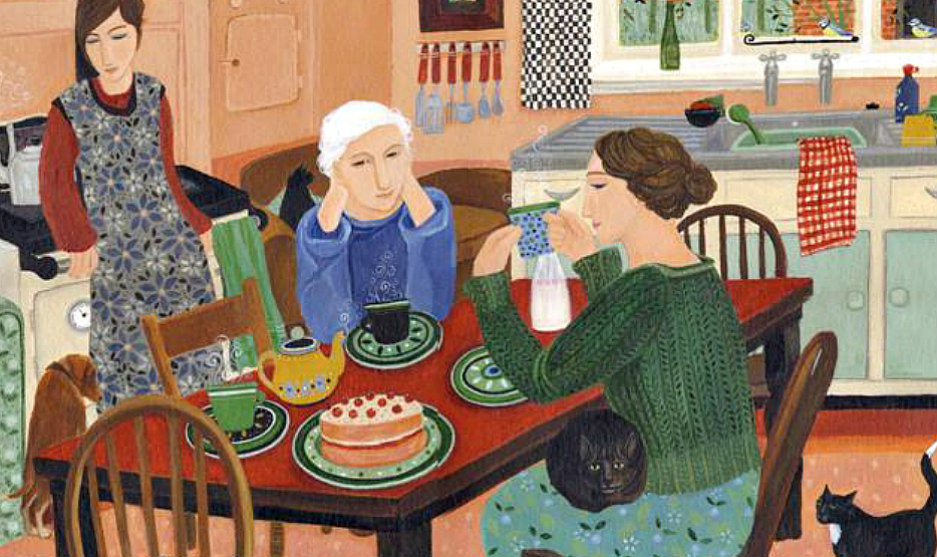
Great post! I’m always happy to see new books introducing kids to the joys of poetry!
LikeLike
This is an excellent series. Have been impressed so far. 🙂
LikeLike
What a great way to introduce kids to our great poets! And these samples of Sandburg’s work are perfect for children to enjoy and understand!
LikeLike
It’s a great series. I like that there are notable scholars chosen to select the poems and provide commentary for each of the poets.
LikeLike
The corn is just starting to giggle around here. It’s only 6 inches high, but I’ll remember Sandburg when its silk starts the conversation with the wind!
LikeLike
How lucky you are to have giggling corn nearby. When the silk starts to converse I hope you’ll write a poem about it. 🙂
LikeLike
I’m so glad to see Sandburg being highlighted — it’s a strange phenomena, but I can’t find a lot of the poetry with which I grew up, outside of old books… I know that there are a lot of poets, but some of the old greats are being lost, and some of the poets like Sandburg, whose simplicity allowed him to be memorized and recited, need to be preserved for a new generation! We indeed need to make room for those in the cannon not white, male, and dead — definitely — but I hope we keep a few good guys like Sandburg.
LikeLike
Sandburg’s work hasn’t seemed to have gotten the critical attention it deserves either. You hear about Frost and Dickinson all the time, but not so much Sandburg. Was it because of the colloquial nature of his poetry, being easy to understand, therefore not inviting analysis? In any case, I’m glad this new book is available.
LikeLike
Before we moved to the city, I grew up in a very small town & visited the telephone office, watching the telephone operator with that “thingamajig clamped on her ears”, saying “number please” & plugging/unplugging the wires.It’s a memory that’s hard to describe unless someone has also done it. My favorite quote from Sandburg that I just shared on Michelle’s site is ““Poetry is a packsack of invisible keepsakes.” Your post fits that so beautifully, Jama, & the book looks wonderful. I’ve seen a few others in this series, ones that all classrooms should have. Thanks!
LikeLike
I’ve only seen “real” telephone operators in the movies, but have always found it fascinating — all that plugging and unplugging. That’s a great Sandburg quote.
LikeLike
Alas I’d never heard of Carl Sandburg before – thank you for the introduction!!
LikeLike
In his work, you will definitely hear the many voices of America. 🙂
LikeLike
I’m so happy that Carl Sandburg is published in an engaging and inviting style for today’s kids. But, I’m one of those “kids” that’s going to have to have a copy. Fog is one of my earliest favorite poems.Fabulous review as always, Jama!
LikeLike
“Fog” is such a classic, like Frost’s “Stopping by Woods on a Snowy Evening.” I’m anxious to see which other poets will be featured in this series. I haven’t seen the Whitman book yet, but so far have enjoyed this book and the Dickinson one.
LikeLike
Love the quote that you started with, Jama. I hope our library has this one, and if not, I’ll suggest that they buy it. Thanks :)!!
LikeLike
Good idea to suggest it — I’ll have to do the same for Fairfax County. 🙂
LikeLike
This looks like a wonderful book to introduce Sandberg to a new audience, and to introduce kids to a different view and time. Love the kid-friendly vocab. notes. Thanks for sharing this one!
LikeLike
Yes, it’s a wonderful intro to Sandburg. Wish this series existed when I was in school. 🙂
LikeLike
Looks to be a beautiful collection! Thanks for the peek inside, Jama. Carl Sandburg also has the most delicious quotes about poetry, doesn’t he? The one here, at the top of your post, Linda B’s favorite, “Poetry is a packsack of invisible keepsakes,” and another one of my favorites that didn’t make it in my blog post, “Poetry is an echo, asking a shadow to dance,” to name but a few!
LikeLike
Yes, he does have great poetry quotes. Wasn’t he the one who said that poetry is the synthesis of hyacinths and biscuits? 🙂
LikeLiked by 1 person
What insightful poems. His words and the illustrations make that world come back alive. The steam trains, corn fields and pawnshops of Middle America. It’s like a history lesson given by a poet.
LikeLike
I like that description — history lesson given by a poet. 🙂
LikeLiked by 1 person
“Street Window,” oh that’s a rich visual poem, Carl Sandburg is another favorite of mine. Your review of this new book is deep, an as rich as the life-giving waters of Lake Michigan. I think this book was titled incorrectly, it’s really for poet lovers of all ages. My son spent a spell at Knox College in Galesburg, IL, and Carl Sandburg’s early childhood home is there. It’s as big as a minute, but oh what fun it was to visit there. And in the yard there are stepping stones running around a path with his poems in the stones, it was a treasure I enjoyed, as is this post, thanks for all Jama!
LikeLiked by 1 person
Oh wow — how cool to visit his childhood home (and I love your expression “big as a minute” — haven’t heard that one before). 🙂 You are right — this book is really great for all ages. The illustrations make you think about the poems you already know in a new way.
LikeLike
It was easy to lose myself in Carl Sandberg’s poetry this morning. I’m embarrassed to admit that I think I have this book in my classroom, but I haven’t opened it. (So many books, so little time!) “Fog” is a perennial favorite of mine and forever changed my view of foggy mornings. Today “Jazz Fantasia” just blew me away. Wow! I also love the vocabulary discretely included on the bottom of the page. You can be sure I’ll be delving into this book come Monday! Once again, you’ve introduced me to a rich resource. (My post today was inspired by Elaine Magliero’s book which I discovered because of your review.) Thanks, Jama!
LikeLike
I loved reading “Jazz Fantasia” especially too — those words danced off the page. “Fog” simply never gets old. So short, so simple, but it works every time.
LikeLiked by 1 person
Happy June, Jama. This is a wonderful addition to the Poetry for Kids series. Hopefully there will be more! Thanks for sharing all of this!
LikeLike
Happy June to you too! I’m looking forward to more books in this series. I sense Robert Frost will be featured at some point. Fingers crossed for E.E. Cummings, my fave of all time. 🙂
LikeLike
You said in the comments, “Was it because of the colloquial nature of his poetry, being easy to understand, therefore not inviting analysis?” And my response is, why must every poem be analyzed? We’ve done a great disservice to the world by focusing on theme, metaphor, and what have you in English classes. Let’s get back to Sandburg’s simplicity and accessibility! (…backing off my soapbox now.) Thanks for sharing this collection, Jama! And here’s yet another Sandburg quote on poetry: “Poetry is the journal of a sea animal living on land, wanting to fly in the air.” Isn’t that great?
LikeLike
I wholly agree — I’ve always felt poetry should be experienced, not analyzed. But analyze is what academicians/professors/scholars do. Certainly when poetry is shared in the classroom, children should be allowed to respond intuitively. When you consider “serious” scholarship, Sandburg hasn’t been covered as extensively as some of our other iconic American poets.
Thanks for another great quote — I love that one too. 🙂
LikeLike
I love this series! The selection of poems and the artwork accompanying them invite readers in multiple ways. Maybe we should all read and share more Sandburg poems to remind ourselves of all the good in our country.
LikeLiked by 1 person
I agree — we need to focus on the good, renew our appreciation of it, and work to retain it!
LikeLike
I like the way everything is talking it over in Laughing Corn. I shared C.S.’s At a Window and Adelaide Crapsey a long time ago. You make me want to revisit his work! Thanks, Jama.
LikeLike
Yes, who knew the cornfield was the place to be? Hadn’t read any Sandburg in a long time, so it was a treat to see this book.
LikeLike
What an incredibly beautiful book! I especially loved the page you shared that featured Theme in Yellow. I’m sucker for fall and pumpkins and the illustration is the perfect pairing for the poem!
LikeLiked by 1 person
I love Theme in Yellow too! One of my fave illustrations. Robert Crawford is new to me and his art is a pleasant surprise. 🙂
LikeLiked by 1 person
I know a little boy who would love this book.
LikeLike
Maybe your library has it? 🙂
LikeLike